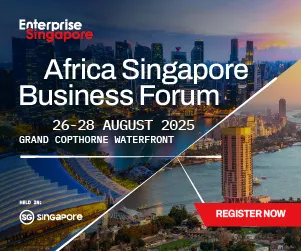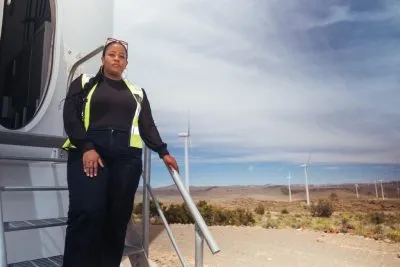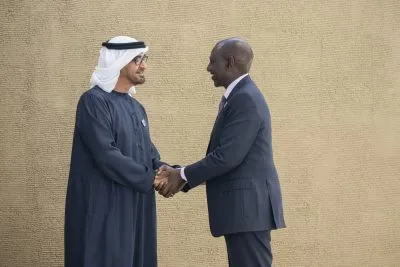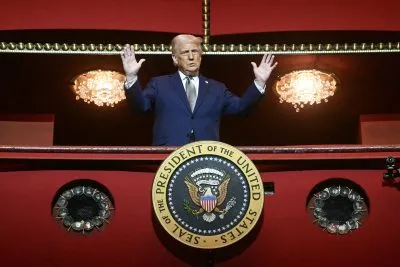Living off previous successes
At times, US policy can seem to be a patchwork, built up from each political generation’s headline initiatives. The Clinton administration’s African Growth and Opportunity Act (AGOA) offered African countries tariff-free access to American markets for their goods with a view to promoting development through private sector growth.
The Bush administration took a more humanitarian approach, launching the President’s Emergency Plan for Aids Relief (PEPFAR), which invests heavily in HIV/Aids initiatives around the continent. Under President Bush, Congress also voted through a bill creating the Millennium Challenge Corporation, a new kind of development institution that encouraged potential recipients to compete for eligibility and to essentially design and implement their own programmes.
When Barack Obama won the 2008 election there was an enormous groundswell of support in many parts of Africa. His Kenyan heritage gave the US a great boost in its public diplomacy. Obama made his first speech in sub-Saharan Africa in Accra in July 2009. Entitled “A New Moment of Promise”, it emphasised the importance that the new government placed on its development partnerships but focused on governance, health, democracy and conflict resolution. At the time, some of the business community felt that it was a mis-step.
Over the previous decade, Africa’s international economic relations changed dramatically. Beijing’s international commercial ambitions drove a step-change in the country’s investments and trade partnerships, and by 2009 China was overtaking the US in the volume of business that it did with the continent. Chinese engagement meant money, in the form of soft loans and grants, but it also meant massive investment by the private sector into the extractive industries, infrastructure and, increasingly, manufacturing.
Beijing’s Forum on China-Africa Cooperation (FOCAC) summits have traditionally ended with big commitments to public sector lending – $20bn at the last event – but also big investment deals. China’s premiers and senior politicians routinely tour the continent, dropping cheques as they do so.
Japan has begun to ramp up its investments too, offering $30bn in aid at last year’s Tokyo International Conference on African Development. Japanese companies joined Prime Minister Shinzō Abe’s visit to the continent earlier this year.
While other countries began to focus on commercial partnerships, the US retained its humanitarian focus in its development assistance, perhaps more so than many Western countries. The past two administrations have maintained support for President Clinton’s AGOA, which offers free trade quotas for African countries to help them to develop productive sectors, but there is a widespread acknowledgement that the US has lagged behind other nations in encouraging its own private sector to participate in Africa’s growth story.
US foreign direct investment (FDI) into sub-Saharan Africa is still significant. In absolute terms, US companies’ investments into greenfield and brownfield projects outstrip all but France’s – if the EU is not counted as a single entity. According to statistics from the United Nations Conference on Trade and Development, US FDI stock was around $25bn in 2012.
However, as Sy points out, the size of the number obscures a lack of diversification. The majority of US FDI goes into the energy sector and other extractives, and is focused on a small number of resource-rich countries. In total, 37 per cent of US FDI goes to Nigeria. Patterns of trade tend to match this bias.
By comparison, Sy says, China’s trade and investment are increasingly diversified. Chinese mercantilist diplomacy has expanded beyond the mode it followed in the early 2000s, where infrastructure and soft loans were bartered for resources.
Today, China’s leaders tour the continent with large corporations in tow, bringing investment into light manufacturing, agro-processing and other productive sectors. The Asian approach offers speed and flexibility; US companies are, to a greater extent, hamstrung by process.
While Asian companies follow their governments overseas, the US, Sy notes, typically works the other way around.
In June 2013, the Obama administration finally proposed a different model for the future, mixing development goals with the stated aim of bringing in the private sector. While on a visit to South Africa, Obama launched Power Africa, an initiative aimed at doubling access to electricity in six African countries by adding 10,000 megawatts of power. Recognising that aid money alone was unlikely to be able to fill the $300bn investment gap in sub-Saharan Africa, USAID is coordinating with other agencies, including the US Ex-Im Bank, Overseas Private Investment Corporation and US Trade and Development Agency, but also with multinational companies, including General Electric.
“The thing with these power infrastructure projects is that they cannot be financed by [aid] grants,” Sy says. “Power Africa is interesting. There you have US agencies that are coordinated by USAID, and they are trying to partner with the US private sector, the African private sector and African governments.
“In the aid community these days there’s a lot of talk about blending of aid, leveraging aid to bring in the private sector. In that regard, Power Africa is a very interesting model.”
Even so, in absolute terms, Power Africa involves a tiny amount of state money. In USAID’s 2015 Congressional budget request, which asked for a total of $20.1bn, just $77m was allocated for the initiative.
Want to continue reading? Subscribe today.
You've read all your free articles for this month! Subscribe now to enjoy full access to our content.
Digital Monthly
£8.00 / month
Receive full unlimited access to our articles, opinions, podcasts and more.
Digital Yearly
£70.00 / year
Our best value offer - save £26 and gain access to all of our digital content for an entire year!

 Sign in with Google
Sign in with Google 





